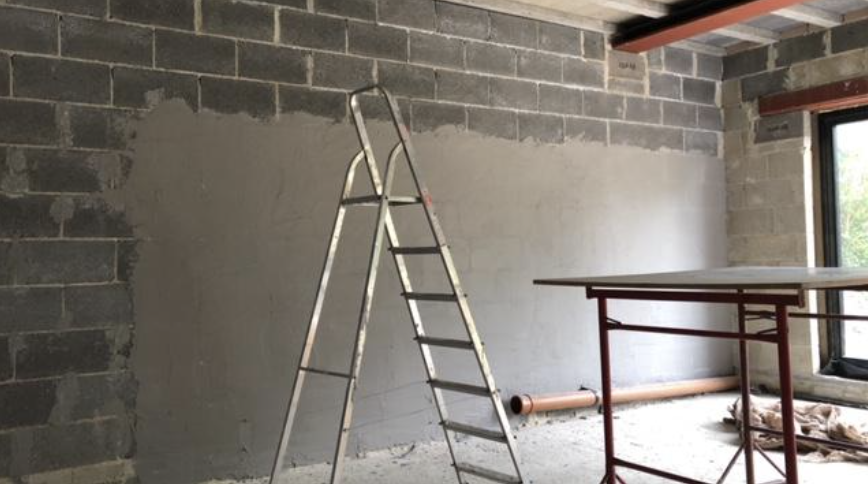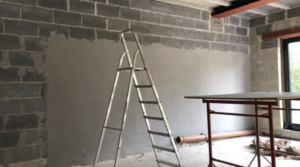The term parge coat refers to the application of a thin coat of cement or polymeric mortar to concrete or masonry walls. Great, but why is this practice done and how does it work? We’ve got the answers you need.
Parging might sound simple, but it plays a crucial role in enhancing the performance and durability of a building. Parging serves as a protective layer, offering benefits that go beyond mere aesthetics.
In the construction and building planning world, regulations now heavily lean towards creating energy-efficient, quiet, and comfortable spaces. Here at JosTec we offer a range of services such as sound insulation testing, air tightness testing, and SAP & EPC calculations, and one often overlooked method to enhance building performance is the application of a parge coat. But what exactly is parging, and how does it tie into the broader goals of improving energy efficiency and acoustic performance?
Let’s dive into the essentials of parging, its benefits, and how it integrates seamlessly with the services we offer at JosTec.
How Is the Parging Mixture Made?
The parging mixture is crafted from a blend of lime, water, and cement. Achieving the correct proportions is vital; otherwise, the mixture may not adhere properly to the wall, leading to issues like cracking and insufficient coverage. This is where professional expertise becomes invaluable.
How Is a Parge Coat Applied?
Once the right mixture is ready, applying the parge coat is straightforward. The mortar is applied to a wet wall using a masonry trowel, which can create either a smooth or textured finish, depending on your aesthetic preference. The application doesn’t require a perfectly flat finish since a topcoat is usually added afterwards, covering any imperfections. This makes parging an efficient and practical solution for enhancing wall performance.
Above: Midway through a parge coat application
The Benefits of Parging in Building Performance
Although a parge coat might seem like a minor detail, its benefits are far-reaching, particularly in the context of the services provided by JosTec.
1. Energy Efficiency and Air Tightness
One of the primary reasons for applying a parge coat is to reduce air leakage through cracks, joints, and porous wall constructions. By sealing these gaps, a parge coat helps to prevent unwanted airflow, thereby reducing energy consumption and improving the overall comfort of the building. This is especially critical in achieving the standards required in air tightness testing. By reducing air leakage, buildings require less energy to heat and cool, leading to lower energy bills and a reduced carbon footprint.
2. Acoustic Performance
Sound waves can easily travel through gaps and cracks in walls, leading to unwanted noise pollution. A well-applied parge coat can as a by-product increase acoustic performance, by reducing the transmission of sound, making spaces quieter and more comfortable. By integrating your parge coating with our sound insulation strategies, we can create environments that are not only energy-efficient but also acoustically balanced.
3. Durability and Longevity
Parging also contributes to the overall durability of a building. By providing an additional layer of protection to masonry walls, helps to shield against environmental factors such as moisture, which can lead to long-term damage. This protection is particularly valuable in regions with harsh weather conditions, where moisture can penetrate walls and cause significant structural issues over time.
Is Parging the Same as Pargeting?
It’s important to clarify that parging is not the same as pargeting. While parging involves the application of a protective mortar coat, pargeting is more decorative, involving ornamental plastering on the exterior of buildings. Both techniques have their place in construction, but when it comes to improving energy efficiency and acoustic performance, parging is the clear choice.
Why Should You Choose JosTec for Your Planning and Building Regulation Compliance Needs?
At JosTec, we understand that every building project is unique, with its own set of challenges and requirements. Our team of experts is equipped with the knowledge and tools to provide tailored solutions that enhance building performance across multiple dimensions—whether it’s through air tightness testing, acoustic design, energy efficiency calculations or one of our other many services.
Get in touch with us here if you’d like more information and solutions on how to make your home more efficient, quiet and comfortable.




